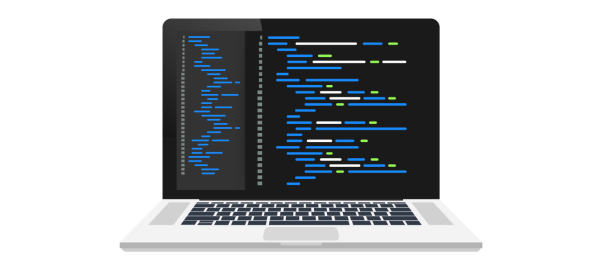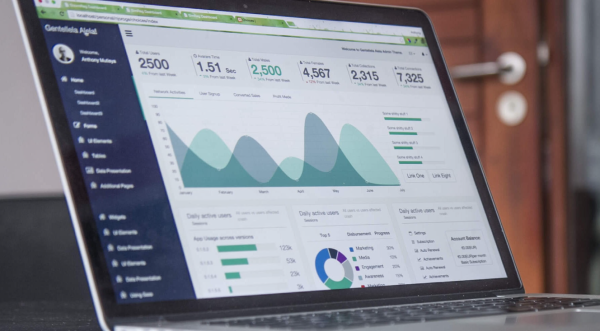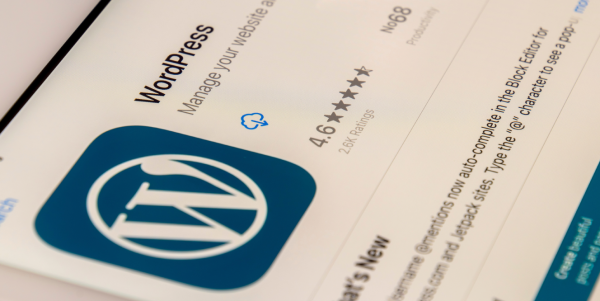What is a Content Management System and How Can It Help You?
by Saunder Schroeder • January 18, 2022
By Saunder Schroeder
A content management system (CMS) makes it easier for content managers to create a website, manage content, and/or facilitate e-commerce services.
You can control your website design and function without worrying about the underlying coding system with an efficient content management system. Not only that, but CMS also lets you create a collaborative work environment where multiple professionals work and share content easily.
Many organizations are now investing in content management systems to enhance their productivity in the digital world. But before choosing one, they need to identify their requirements and see what type of CMS works for them.
If you’re a little skeptical about investing in one, this guide will help you understand what a content management system is and why you need one.

What Is a Content Management System (CMS)?
A content management system is a software that enables users to create, manage, and update content on their website without having any technical know-how. It is a tool that lets you build and manage your website while taking care of the technical (underlying coding) part on its own.
This means you don’t have to hire a team of specialized developers to develop and manage your website content. Instead, you can invest in a good content management system, create web pages, store content, and perform other functions with little programming knowledge.
The CMS handles all the coding and basic infrastructure from the back-end so that you can focus on developing engaging content for your website. Apart from website management, the CMS also helps with document management.
This is how most CMSs function:
- Content creation: It lets you create, design, and format content as you like.
- Content storage: It stores your designed content in one place.
- Workflow management: It allows you to distribute your workflows and assign responsibilities for content management based on designations, such as editors and admins.
- Content publishing: It organizes and publishes content.
What Are the Benefits of Using a Content Management Platform?
Content management software is all about providing ease to its users. Here are some of the reasons why you should invest in one:
Seamless Content Scheduling
A CMS lets users manage and modify content in various ways; you can take charge of adjusting your content calendar and automating marketing strategies.
All you have to do is create a content schedule in the CMS and assign different content to publishing dates as per your requirements. Then, the CMS will publish each content at its designated date. It is as easy as it sounds.
Collaboration: Your Work Space Can Be Shared
The biggest advantage of a CMS is creating a collaborative work environment.
With the CMS, multiple users can connect and perform different functions, like creating, scheduling, and publishing content. This all is due to the CMS’ browser-based interface, which can be easily accessed regardless of the user’s number and location.
Customization for Marketing Teams
CMS aims to make everything easier for marketing teams. It allows marketers to customize their content strategies and target their audience.
You can segment your website content based on visitors’ interests, personalize the content as per their interests, preview your steps, and finally, track and analyze their results.
Since non-technical people can also use a CMS, every individual in the marketing team can use its tools to perform their duties. The drag-and-drop editors allow users to create and publish text and post images without knowing any programming languages like HTML or CSS.
Distribution of Content to Multiple Digital Channels
You can distribute your content to multiple digital channels your company works with while working with just one CMS. For instance, if you have created a compelling post for your website, the CMS will let you publish it on various channels like the intranet, digital signage, and social media platforms.
Want to know something even better? You can share the content to all these channels without visiting them separately.

How Does a Traditional CMS Work?
A traditional CMS links both ends of a website, the front-end and the back-end, in an easy application codebase. It stores the content in a database, which is displayed in a presentation layer based on different templates like a website.
Typically, a CMS depends on the working of its two components: a content management application (CMA) and a content delivery application (CDA).
- Content management application (CMA): A graphical user interface allows you to create, design, update and remove content from your website without knowing programming languages.
- Content delivery application (CDA): It caters to the back-end duties that are applicable after you create the content in the CMA. The CDA manages and delivers the content according to your content requirements.
What Are Key Features of a CMS?
The core features of a CMS include:
Responsive Design
When designing a website, you have to look for a responsive design or theme that is well-optimized for all devices to generate more traffic. Themes also give your website a consistent and unique look. A content management system makes it easier to choose the most responsive design.
Generally, all CMS software includes several website themes. So, you need to choose the one that suits the nature of your website. If your CMS doesn’t have a theme you want, you can also build it on the software.

Analytics: Understanding of How Your Content Is Performing
Performance analysis is a crucial step for all businesses to monitor their progress. Having clear insights about your target audience, what devices people mostly use, and how they are behaving on your website helps you modify your content.
An effective CMS has built-in analytics that measures such performance indicators and shows the results right in front of you. Although some content management systems don’t offer the analytics feature, they integrate with other analytics tools, like Google Analytics, to help you understand how your content strategies are working.
Integrations: How Do They Work?
A CMS is not a super-tool that can fulfill your business needs single-handedly. This is why it can integrate easily with third-party software to keep your business operations in a flow. Once the CMS integrates with a third-party app or software, the data flows freely between the applications to help you distribute, track, and analyze your content.
Integrations can be in the form of “extensions” or “plugins,” which are usually available from a marketplace. Some common CMS integrations include social media posting and market automation tools.
The social media tool allows you to post on your various social media pages from a single CMS source. In contrast, the market automation integration facilitates your marketing strategies with additional features that your CMS doesn’t have.
Search Engine Optimization Tools
A CMS with built-in search engine optimization (SEO) tools helps your website rank better on search engine results pages.
Before using the CMS SEO tools, you need to ensure that your website is SEO-friendly. This means it should use proper HTML markup, SEO-friendly permalinks, and responsive design. Then, you can receive help from the SEO tools offered by your CMS.
A good CMS software gives effective SEO recommendations when creating content, such as high-performing keywords, titles, meta descriptions, and more. These suggestions help your visitors and search engines understand your website content easily, improving your ranking.
Customizable Templates
Templates are a great life-saver when you’re short on time and just want to complete your content publishing task. They provide you with pre-designed posts or pages so that you don’t have to start from scratch every time.
Keep in mind that templates are not themes. A template is a one-page layout that comes with a theme or is compatible with a specific theme. You can download it separately from a theme as well.
Luckily, a CMS comes with pre-designed templates and also lets you create customized ones.
Content Management System Examples
You can find free and subscription-based content management system software for personal and business use. Below are some widely-used CMS examples:

WordPress
Undoubtedly, WordPress has been the best content management system for years. It currently holds a 43.2% market share, according to the W3Techs survey.
WordPress is a free and open-source web content management system (WCMS) based on SQL and PHP.
Some businesses use this software in the cloud, while others deploy it on computers to serve as their own web servers.
It offers various options in themes and over 58,000 plugins for easy customization.
Ghost
Ghost is an open-source platform for professional content publishing. It is based on a modern technology stack, Node.js, specifically designed for businesses that want to provide flexibility to their content creation teams.
This CMS software facilitates writers and editors with multiple tools and claims to control a large chunk of content you read on the internet.
Webflow
Webflow is a content management system that provides ease to editors, web designers, content strategists, and developers — all in one. It lets designers create visual content without worrying about messy coding or database management.
The editors can write, edit, and modify content directly on the page and then publish it with a click. Not only that, but Webflow also assists content strategists in creating customized content according to their requirements. Then, the developers can add, modify, or publish content directly from the terminal via their REST API. Truly an all-in-one solution!
Magento
Magento is an open-source CMS platform that uses MySQL and Zend PHP databases. It is designed to help e-commerce business owners with a basic level of web development knowledge to grow their stores online.
This CMS software gives you control over the design, content, and functionality of your e-commerce store(s).
Magento provides the users with an attractive admin interface, strong catalog management, and effective marketing tools.

What Is the Average Cost of Using a Content Management System?
The costs of content management systems vary according to their types. Typically, the more CMS features, the higher the price.
An open-source CMS (like the ones mentioned above) is free to download, but you’ll have to pay for other things. For example, third-party provider hosting, SSL certification, the use of additional tools for security, maintenance, and more are a few features you’d have to purchase.
On the other hand, you don’t have to pay for any such costs with proprietary CMS software. A good proprietary CMS only charges you a monthly fee and provides all the content management services without any extra charges.
The costs of proprietary software range broadly. While Weebly only costs you $6 per month to connect a personal domain and create a site, Contently ranges from $3,000 to $25,000 per month. Enterprise content management systems (ECM) are relatively more expensive.
So, the average costs of CMS can be between $0-$25,000.
How to Choose the CMS That Is Right For You?
Choosing the right type of CMS makes all the difference for businesses. Here are three common CMSs:
Enterprise Content Management System (ECM)
An ECM provides an organization’s members easy access to the content they require for their task completion. It collects and manages the documentation of an organization and delivers them to the right audience.
The ECM also frees up space by deleting unnecessary files after a specific retention period. This reduces storage costs significantly.
Moreover, it also provides flexibility by letting you view any type of file from any location, no matter when you need it.
Web Content Management System (WCMS)
A web content management system (WCMS) allows users to optimize a website’s digital elements without having any expertise in web programming. In addition, it helps in the management of digital content with the collaboration of various tools.
You can use a WCMS to customize your content and improve your workflow management as it publishes content automatically.
While some CMSs cater to web and print content, the WCMS only deals with web content.
Digital Asset Management System (DAM)
A digital asset management system (DAM) serves as a digital repository where all the members of an organization (clients, contractors, and employees) can access the content. It lets users store, manage, and share digital content with anyone they want. This digital content includes audio, videos, files, documents, and presentations.
Since DAM is cloud-based, the content is safe, and you can access it from anywhere. Moreover, this CMS also allows you to publish the content to social media channels and third-party distribution services.
How Can a Content Management System Help You?
A content management system facilitates your content creation in a variety of ways. It helps you choose a responsive web design, write content, edit it, make SEO-friendly changes, and modify it before publishing on the front layer.
The best part is that you don’t need to have any prior technical knowledge about programming languages to use a CMS.
Basically, if you want to remove the burden of publishing, you can rely on an efficient content management system like Disruptive. The marketing consultants, designers, and teams of creative strategists at Disruptive take care of all of your content needs so that you focus on other tasks.





